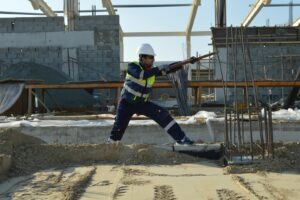 Immigration has added to our social, economic and cultural capital, says Bernadette McAliskey
Immigration has added to our social, economic and cultural capital, says Bernadette McAliskey
Dungannon is the largest town in the Mid Ulster area, with a population of about 16,000. This is a rural community, combining poor land on the higher and lower levels with rich farming pasture in between.
The population of Dungannon grew 14% between 2001 and 2011, the largest population growth of any town in Northern Ireland.
This has largely been driven not by movement from local villages into the town, but by immigration to the area from villages as far away as Guinea-Bissau, East Timor and eastern Europe.
Given the tone of conversation across the UK on the topic of immigration, you would be forgiven for assuming Dungannon must be a town in crisis, with social and economic systems grinding to halt as ‘they steal our jobs, houses, hospital beds and our women (or men)’ but not so. Indeed, the reported burglary rate in Dungannon has significantly decreased.
Our new population, largely young, able-bodied, skilled, and working, has protected the area from the impact of several economic crises: the fall in the value of housing properties; the economic recession; the drift from the rural area of local skilled and professional workers.
In 2001 less than 1% of the population in Dungannon were not UK or Irish citizens; in 2011 this figure was closer to 11%.
So what made someone wake up in Guinea Bisseau or Gansk and decide to head for this small rural area?
Mostly the people came because we sent for them. One of the opportunities arising from peace and greater political stability following the 1998 Belfast Agreement which brought most armed conflict in Northern Ireland to an end, was the ability of local firms to attract additional labour.
Key industry in the area is agri-food and engineering. Agri-food led the way, recruiting skilled and semi-skilled meat workers from southern Europe, primarily Portugal.
In 2004, the engineering industry followed, recruiting highly skilled engineering workers from Lithuania and its neighbouring countries who had joined the EU. Initially workers were recruited as agency labour, which resulted in significant exploitation.
The more unscrupulous agents had not reckoned with the local socio-political environment, but the local community and human rights activists who had cut their organising teeth in harsher circumstances were up for the challenge of defending their new neighbours’ working and living conditions. It was not universally applauded but it set the tone for the new era of more open and inclusive community.
Some 15 years later, with the highest per capita rate of new immigrant population, Mid Ulster has just 3.5% of working age people claiming unemployment benefits compared to the Northern Ireland average of 4.6%; 78% of our young people leaving school with at least five GCSEs (grades A-C), almost 1.5% higher than the regional average, and our low-income earners are 3% lower than the regional average. We also have the lowest crime rate of all 15 local government areas and the highest investment in local businesses.
Amid these statistics, what we are collectively doing is building a sustainable, diverse and interdependent community in which the catalyst is the energy and creativity created by a whole new population of diverse perspectives and skills adding to our social, economic and cultural capital.
The journey is not without its challenges but no worthwhile journey ever is. We are thriving on the diversity challenge. Now all we need is good government. That will be a bigger challenge!

















Leave a Reply